Freedom Fighters
These brave men and women who participated in the Warsaw Uprising are today proud U.S. citizens. The battle they fought for freedom in 1944 against the Nazi war machine had for years been relegated to the dustbin of history. But in 2014, their sacrifice and courage was finally recognized in a state-sponsored ceremony in Warsaw. Returning to the city they had fought to save, they shared their stories with the Post in order that their children, grandchildren, and great-grandchildren would know of the value they place on freedom.
George W. Kielak
Las Vegas, Nevada
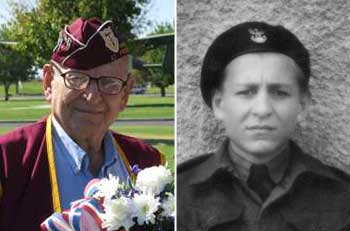
Age: 85
Resistance code name: Orzel (Eagle)
When the Germans came: “Everything that we were used to as expected as normal, penalty was death. Help to the Jewish people. Penalty for death. Even if a slice of bread.”
The Uprising: When he swore his allegiance to the resistance, “I came home to my mother, and I was not sure her reaction, and I told her. She said, ‘They will kill you, they will kill you,’ and that meant to me her approval.”
Close call: As an ammunition carrier, he had a gun that did not actually work, but looked impressive: “I was at a barricade in front of the cathedral. Suddenly, I saw a German in front of me. Both of us jumped behind the big pillar in the cathedral, he from one side, I from the other.” The German tossed a grenade at him, but it didn’t explode. George pulled out his gun. “I told the German to put his hands up, and he was shaking like gelatin.”
Liberation: He was captured when the resistance failed. He was freed from Stalag VIJ, a German prison camp near Cologne on April 17, 1945. George remembers feeling “excitement and disappointment and jealousy,” adding, “American coming for Americans, British for the British, and the French could walk to their country.” He could not return to Poland, now ruled by Soviets who were killing Polish resistance members.
Today: “Freedom doesn’t come free. You have to earn it.”
Krystyna Chciuk
San Francisco, California
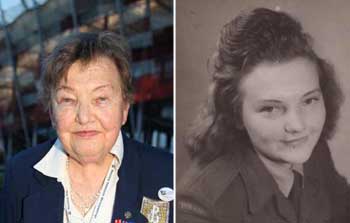
Photo (left) by Michael Luongo. Courtesy Krystyna Chciuk
Age: 88
Resistance code name: Sonia
The Uprising: At 15, she secretly followed her older cousins into a building and hid while a priest administered an oath of allegiance to the gathering. When he discovered her, she announced, “It is too late Father, because I already took an oath with everybody.” While the priest fretted over what to do, “a voice came from the dark, a woman’s voice, ‘I will take her.’ And that is how I joined.”
Surrender: The most sad, tremendous moment was when I had to give up my gun. The men were trying to kill themselves, and we had to talk them out of it.” They were placed into cattle cars — “50 people in one wagon, we could not stand or sit”— and sent to German work camps.
Today: Krystyna said her experience is a reminder to “treasure your freedoms. Don’t be so complacent about your freedoms here. America is the best country, and hopefully we are far away from harm’s way. But freedom you have to fight for. You have to teach your children to guard it and fight for it every day.”
Mark Rudnicki
Sacramento, California
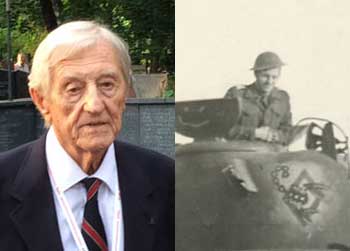
Courtesy Mark Rudnicki
Age: 92
Resistance code name: Emir (Prince)
The Uprising: Mark and a small band of resistance fighters took over Warsaw’s telephone exchange, one of the city’s tallest buildings. “Once we got inside, the Germans were throwing hand grenades and shooting.” They won the building floor by bloody floor, and Mark and a friend “ran to the top of the building and took the German flag down,” putting the Polish one in its place.
Surrender: At war’s end, he made his way from Germany to Italy and finally the U.S. in 1952.
Today: Six million Poles lost their lives in the war; “Three million were Catholics and 3 million were Jewish. We wanted freedom, and before the war Poland had freedom of religions.”
Christine Stamper
Newport Beach, California
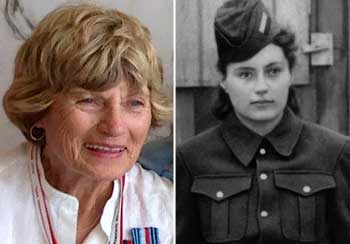
Courtesy Christine Stamper
Age: 86
Resistance code name: Krystyna II
Invasion: Just 11 when the Nazis first came, Christine lived in the center of Warsaw. “The change was immediate, like from night and day,” she said, with rules forbidding radio and gun ownership and establishing curfews. She recalls segregated street cars, Germans in front, Poles in back.
The Uprising: It was forbidden to go to school, so she attended an underground one. One day in 1944, her school’s block was surrounded by Germans. The situation seemed hopeless, but “somebody knew there was a way to get into the storm drain,” Christine said. She and 88 insurgents crawled underground nearly 8 hours, emerging in cabbage fields in territory controlled by the Germans.
Today: “You do anything for freedom, and you don’t know what you would do until you lose it.”
Bill and Lili Biega
Monroe, New Jersey
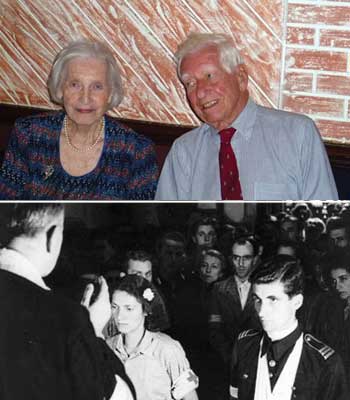
Top Photo: Courtesy Bill and Lili Biega. Bottom Photo: © Uprising Museum
Age: 92 and 91
Resistance code names: Palak (Collector) and Jarmuz (Parsley)
The Uprising: Bill had been wounded by machine-gun fire. He met Lili at a field hospital where she trained young women as medics. Love blossomed quickly, and they married on August 13, 1944, an event filmed by the resistance’s propaganda team. Their wedding became famous among resistance fighters and is often reenacted during commemorations.
Surrender: Bill and Lili were transported to the German POW camp Stalag IV-B Zeithain, where they were allowed to remain together. When the war ended, Bill became a Polish liaison officer to United States Armed Forces occupying southwest Germany. The family made its way to England, finally reaching the U.S. on January 2, 1951.
Today: Bill wants others to know “the importance of standing firm for your beliefs.”
Accompanying articles from the July/August 2015 issue:
“The World War II Struggle That Time Forgot” by Michael Luongo
“Behind Enemy Lines” from the Post archive